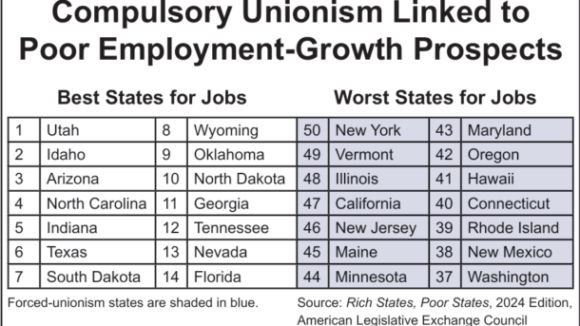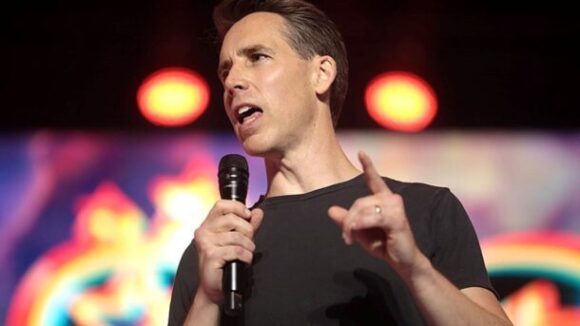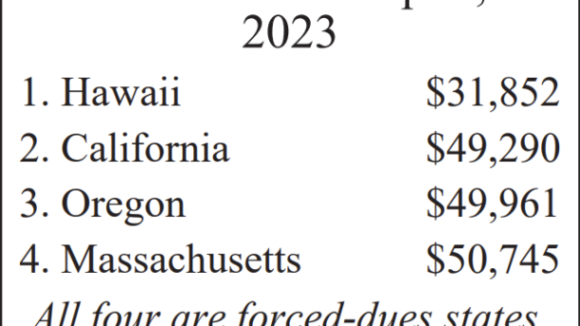Wisconsin Republicans put their careers on the line to reform the state’s collective bargaining process for government unions — standing up to entrenched special interests and back room deals that have dominated the political landscape for decades. Byron York of the Washington Examiner takes a look at one of the corrupt bargains that seems to be coming to an end thanks to their efforts. It appears the union bosses were padding their bottom line by forcing school districts to buy health insurance through a company they owned — all at inflated costs. Now free of those constraints, schools are saving money on wasteful contracts helping teachers and students in the process. Other states should take note.
The Hartland-Lakeside School District, about 30 miles west of Milwaukee in tiny Hartland, Wis., had a problem in its collective bargaining contract with the local teachers union.
The contract required the school district to purchase health insurance from a company called WEA Trust. The creation of Wisconsin’s largest teachers union — “WEA” stands for Wisconsin Education Association — WEA Trust made money when union officials used collective bargaining agreements to steer profitable business its way.
The problem for Hartland-Lakeside was that WEA Trust was charging significantly higher rates than the school district could find on the open market. School officials knew that because they got a better deal from United HealthCare for coverage of nonunion employees. On more than one occasion, Superintendent Glenn Schilling asked WEA Trust why the rates were so high. “I could never get a definitive answer on that,” says Schilling.
Changing to a different insurance company would save Hartland-Lakeside hundreds of thousands of dollars that could be spent on key educational priorities — especially important since the cash-strapped state government was cutting back on education funding. But teachers union officials wouldn’t allow it; the WEA Trust requirement was in the contract, and union leaders refused to let Hartland-Lakeside off the hook.
“It’s going to save us about $690,000 in 2011-2012,” says Schilling. Insurance costs that had been about $2.5 million a year will now be around $1.8 million. What union leaders said would be a catastrophe will in fact be a boon to teachers and students.
In the health insurance talks, for example, Schilling last year began telling teachers about different insurance plans, some of which, like United HealthCare’s, required a higher deductible. “We involved them, and they overwhelmingly endorsed the change to United HealthCare,” he says. But even with the teachers on board, when school officials presented a change-in-coverage proposal to union officials, it was immediately rejected. The costly WEA Trust deal stayed in place.
It’s not hard to see why union officials hate the new law so much. It not only breaks up cherished and lucrative union monopolies like high-cost health insurance; it also threatens to break through the union-built wall between teachers and administrators and allow the two sides to work together more closely. The old union go-betweens, who controlled what their members could and could not hear, will be left aside.
Hartland-Lakeside isn’t the only school district that is pulling free from collective bargaining agreements that mandated WEA Trust coverage. The Milwaukee Journal Sentinel reports the Pewaukee School District, not far from Hartland-Lakeside, will save $378,000 by next year by leaving WEA Trust. The Menomonee Falls School District, farther north, will reportedly save $1.3 million. Facing state cutbacks, the districts can’t afford to overpay for union-affiliated coverage.
Look for the unions to fight back with everything they have. If the Wisconsin situation has shown anything, it is that organized labor views the collective bargaining fight as a life-or-death struggle. If the unions lose in Wisconsin, the clamor for change could spread to other states. What happened in Hartland-Lakeside could become a model for other schools looking for new and better ways to do business.


